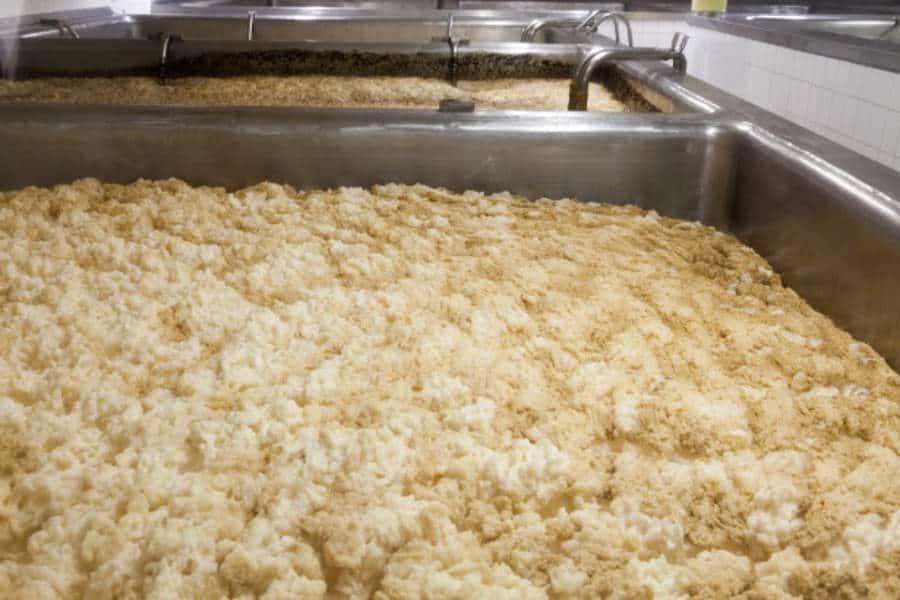As I having my morning brew (I mean tea, of course) I began thinking about what would be the most troubling scenario for a budding brewer. One of the most anxious periods in the brewing process for most people has to be the fermentation stage.
So, why isn’t your homemade beer fermenting and how can you fix it?
A non-fermenting beer is connected to your wort, its sugar content, and the viability of your yeast. Either it’s too old or doesn’t have enough sugary nutrients to feed on. Higher and lower ambient temperatures can be a cause as can a lack of oxygen. All are necessary for yeast to ferment beer.
Luckily, if you can identify the problem early enough there are some fairly straightforward fixes to a non-fermenting wort. I will go into more detail about each of them in this article.
I will also explore what to do when fermentation started but suddenly put the brakes on, known as “stuck fermentation”. So if you are looking for a solution stick around!
Your Yeast is past it!

Problem:
Yeast is a living organism and, just like all living things, it has an expiry date. If your yeast is too old then it will not work as effectively as it once did, or worse, it won’t work at all.
Always check the expiry date on the yeast packaging, it’s normally printed on the back or upper part of the packet.
Fix:
Your only course of action here if you’ve just noticed an expired date on your yeast packet is to start again. No! I don’t mean the entire batch, just the yeast starter.
Prepare another yeast starter with a fresh packet of yeast and make sure to aerate it as much as possible.
You need more nutrients in your wort!
Problem:
If you are brewing based on an all-malt recipe, this probably won’t affect you. However, if you aren’t then you should read on. The issue here is that your yeast needs sufficient nutrients, in its case sugars, to do its job effectively. If the yeast has nothing to feed on it can’t turn your beery soup into something with an alcoholic kick.
If your yeast was new and you are using a recipe not based on a high proportion of malt, corn or rice, then your non-fermentation is probably due to this problem.
Fix: You should simply add a packet of yeast nutrients to your wort along with a brand-new yeast started. This will get your wort bubbling in no time.
Yeast needs to breath oxygen too!
Problem:
During the preliminary steps of your brewing process, not enough oxygen has mixed with your wort. If yeast doesn’t have sufficient air to work with then it simply won’t convert sugar into ethanol or produce CO2. Of course, exposing your wort to the elements now can have negative results in terms of bacterial infections, so proceed with caution.
Fix:
You need to get air into your wort and you need to do this before you do anything else. There are many techniques to consider. If you are carrying out fermentation in an open container you can simply stir the wort around to trap air inside.
If you are using an enclosed container for your fermentation then you can consider using an aeration device which will allow air into the airtight environment safely.
There is also the direct oxygenation method of using a carbonation stone to promote the production of O2 in your wort.
Make sure you have aerated your wort sufficiently and then proceed with a fresh yeast starter to ensure proper fermentation.
It’s too hot/cold for fermenting in here!
Problem:
It is a case of the Goldilocks syndrome when it comes to yeast, i.e. the temperature has to be just right. If you have pitched your beer in an environment above or below the supplier’s recommendations, you may have sluggish on non-viable yeast in your wort. Remember yeast is very much alive and very particular about the ambient temperature it can survive at.
Fix:
Review the directions of your yeast supplier, the information should be clearly shown on the packaging. If not, you can check for the information online.
Consider increasing or decreasing the temperature in your brewing space before starting with a fresh yeast starter.
My yeast just quit on me!
Problem:
Sometimes, but not too often, you can get everything right and still fermentation doesn’t start. You have, what you thought was, viable yeast. You adequately aerated your wort and added the right nutrients and the temperature is just right. But still, nothing. In this case, your yeast may just be defective.
Fix:
There’s nothing to do but try again with another yeast starter and hope that this time the beer gods are smiling down on you! Try to take it in your stride and hope for better luck next time.
If, however, your wort noticeably started the fermentation process but didn’t finish it we refer to that as ‘stuck fermentation’.
Stuck fermentation, what is it?
Problem:
Stuck fermentation is a little different to the issue we were just discussing. So, what is stuck fermentation? Well, it’s what brewers refer to as the situation when fermentation has occurred as expected but has not seemingly stopped before the specific gravity of the wort has reached the desired levels. Basically, the yeast has not fully done its job of transforming the remaining sugars into useful CO2 and ethanol.
First of all, you need to be sure that your fermentation is really stuck. It’s possible that even if you can’t see and CO2 being produced in the form of bubbles that fermentation is still happening. Or, possibly, your fermentation stage just happened more rapidly than you had expected.
Fix:
Firstly, you need to check the specific gravity of your beer. You should have taken a reading of your beer’s specific gravity, or its density in relation to water, just after the mashing stage.
We are looking for a specific gravity of between 15-30% of the original gravity. If your reading is more than this you have indeed experienced stuck fermentation.
In order to fix this problem, you need to add a fresh yeast starter. Make sure that you are adding yeast which is active and in its growth phase. If you were to just add the yeast packet directly you could poison it with the alcohol already in your wort or suffocate it with a lack of oxygen. This could have very bad results for your beer, so proceed with a nice fresh yeast starter.
How do I prepare a yeast starter?
There are two ways to prepare a yeast starter to fire up your beer’s fermentation phase by using either dry yeast or liquid yeast. Always use named brand yeast products as you can be sure that these will provide you will viable yeast that will actually work.
Dry Yeast
You’ll be re-hydrating the dry yeast before adding it to anything as this is a key step. Pour about a cup of warm water (95-105°F or 35-40°C) into a container that you have sterilized beforehand. Now stir in the yeast and cover it while you wait for around 15 minutes.
Next, we want to check the yeast is alive and kicking by adding a teaspoon of extract or a boiled sugar solution (1 teaspoon of sugar boiled in water). Now leave this concoction in a warm place out of direct sunlight for 30 minutes. If the yeast is viable then after this time it should be visibly working and producing foam. It’s now ready to pitch.
Liquid Yeast
You should keep your liquid yeast package cold as this will keep the yeast inactive until you are ready to use it. A few days before you plan to brew you need to warm up the yeast to room temperature.
Some liquid yeast comes with nutrients already added which the yeast will initially feed on, but you will still need to pitch the yeast for best results.
Related Questions:
Can I use Champagne yeast in beer?
Yes, some beer recipes, especially Belgian lambic beers actually use Champagne yeast for flavor and to stimulate a secondary fermentation in heavy corked bottles. Only do this is the recipe for your home brew requires it.
How can I add just nutrients to my beer during fermentation?
If you need to add some additional nutrients to your fermenting wort make sure that you bring the temperature up to the optimal level for your yeast brand. Agitate the wort to suspend the yeast better in it but avoid splashing. Dissolve sugar and yeast nutrients in boiling water before reducing its temperature to that of your wort. Add it to your wort.





